Mazda has revealed the pricing and specifications of its all-electric MX-30, confirming that the new model will be available from a competitive £25,545.
That headline price is for the base MX-30 SE-L Lux and includes the £3000 government grant. It features 18in alloys, LED headlights, a head-up display with traffic sign assistance, radar cruise control, an 8.8in touchscreen display with sat-nav, Apple CarPlay and Android Auto mirroring, and a separate 7.0in climate touchscreen as standard.
Further kit includes a host of driver assistance tech such as rear cross traffic alert and emergency lane keeping with blind-spot assistance. All MX-30s come with a Type 2 AC charging cable and a socket for 50kW rapid charging.

Stepping up to First Edition, which is the only model currently available to pre-order, adds new colour options, adaptive LED headlights, different LED rear lights, an orange-and-stone leatherette interior and eight-way adjustable and heated front seats. Just 500 First Editions will come to the UK in the first wave of deliveries.
For just £50 more (presumably to fill the gap once the First Edition sells out), the £27,545 Sport Lux gets electric seats and the option of more colours, including a three-tone design combining three body colours.
Range-topping GT Sport Tech brings a power and tilt sunroof, a heated wheel, a 12-speaker Bose surround sound system and a 360deg rear-view camera. Customers can reserve a car for £800 for delivery, estimated to be before the first quarter of 2021 ends.
The MX-30 will shake up the EV market when it arrives, shunning typical characteristics, such as silent motoring and one-pedal driving, that are found in EVs.

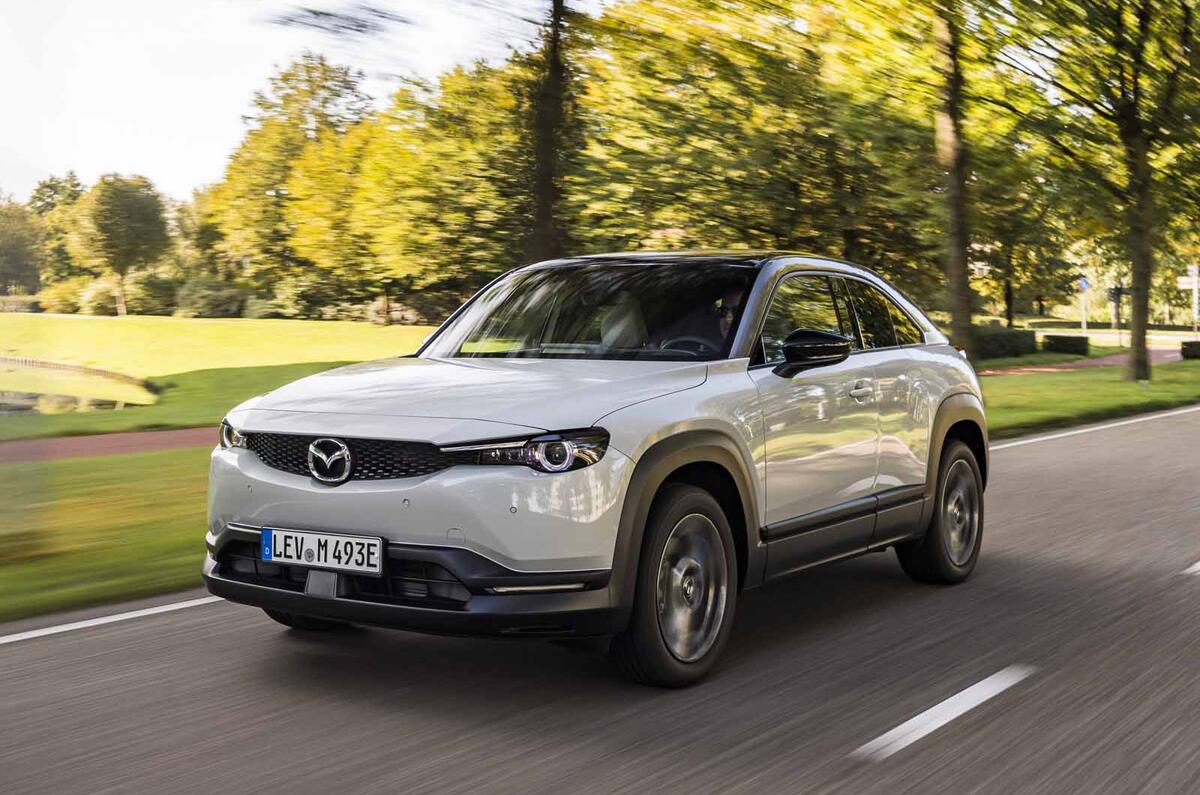
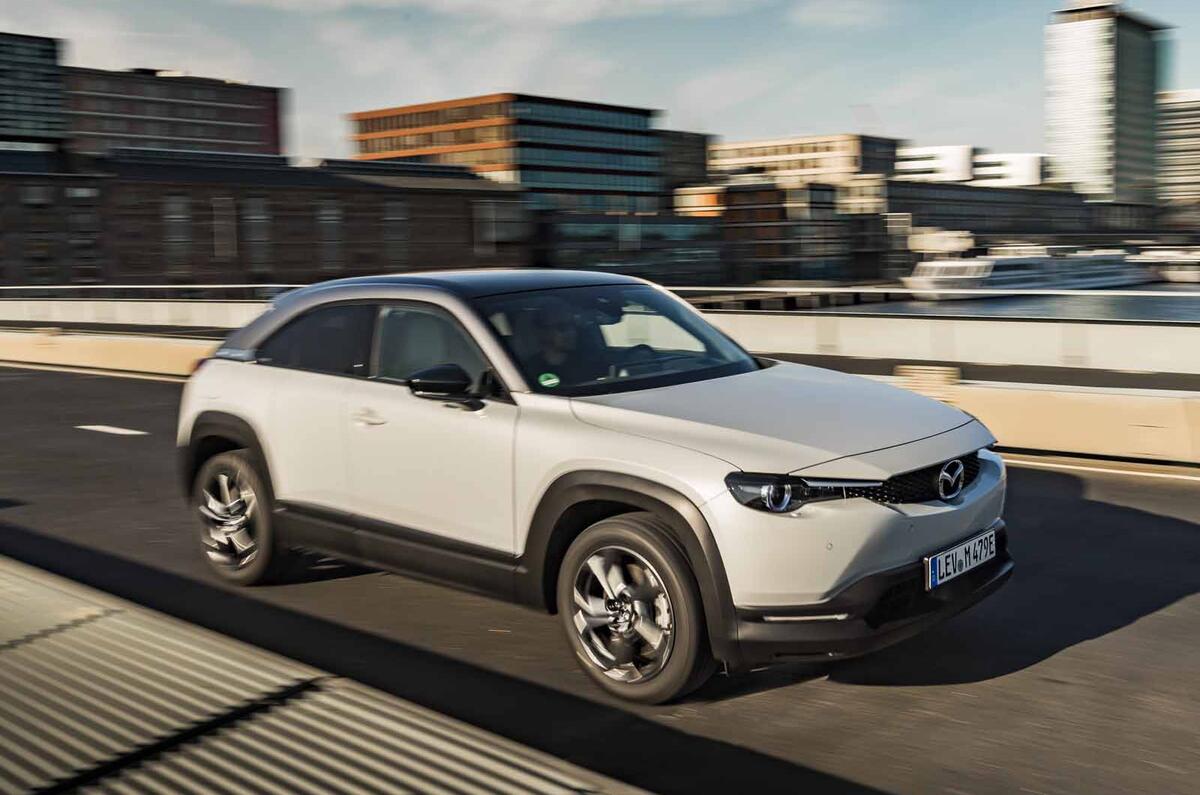
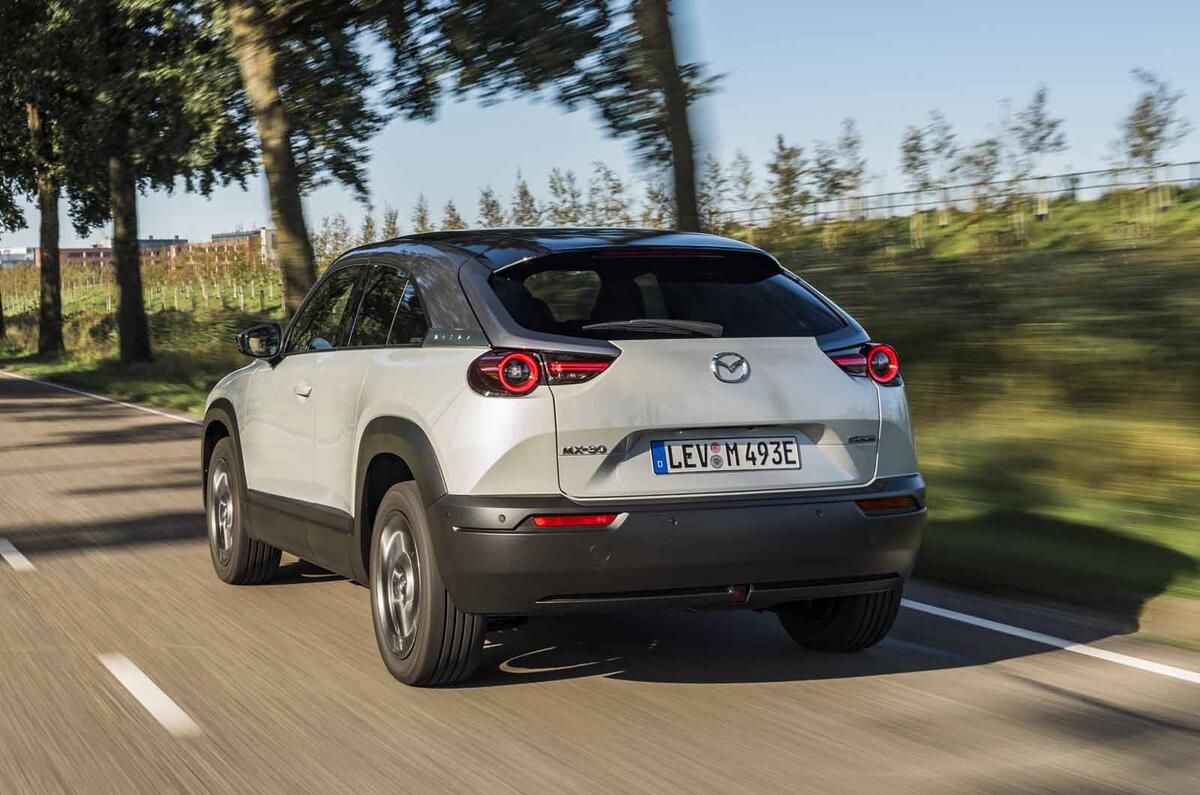
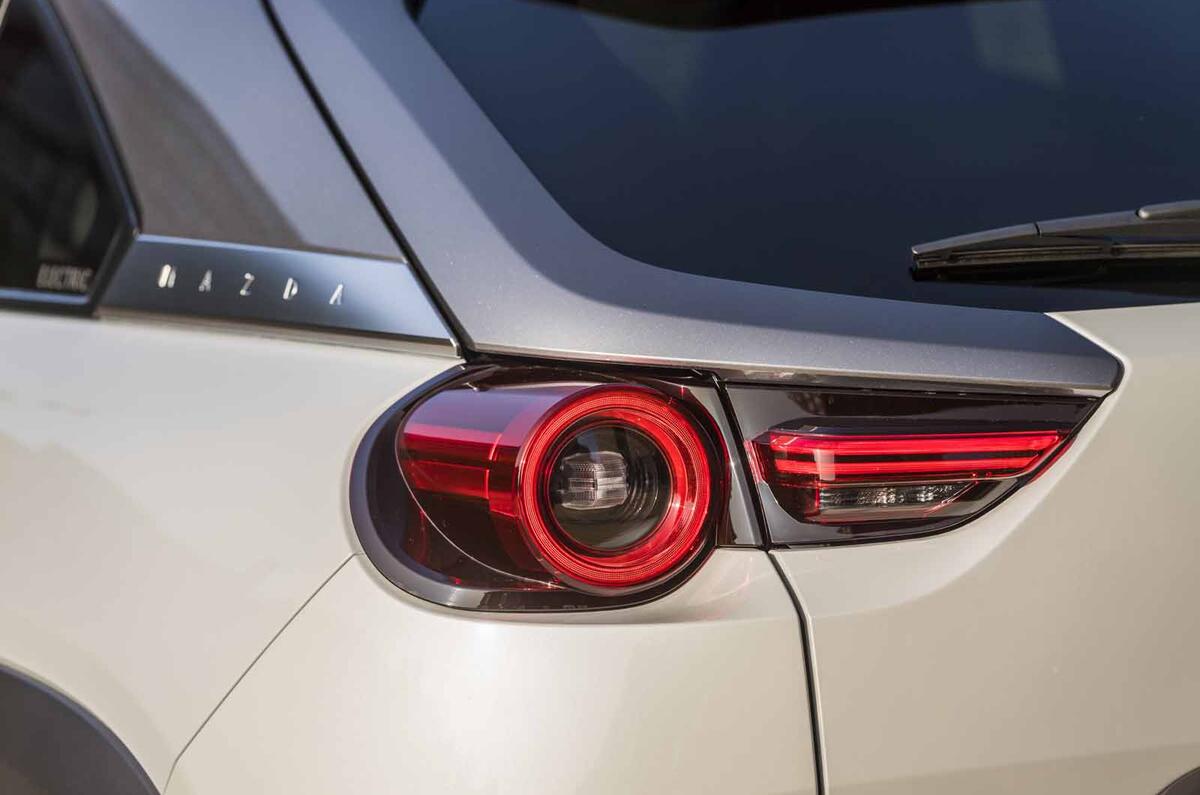
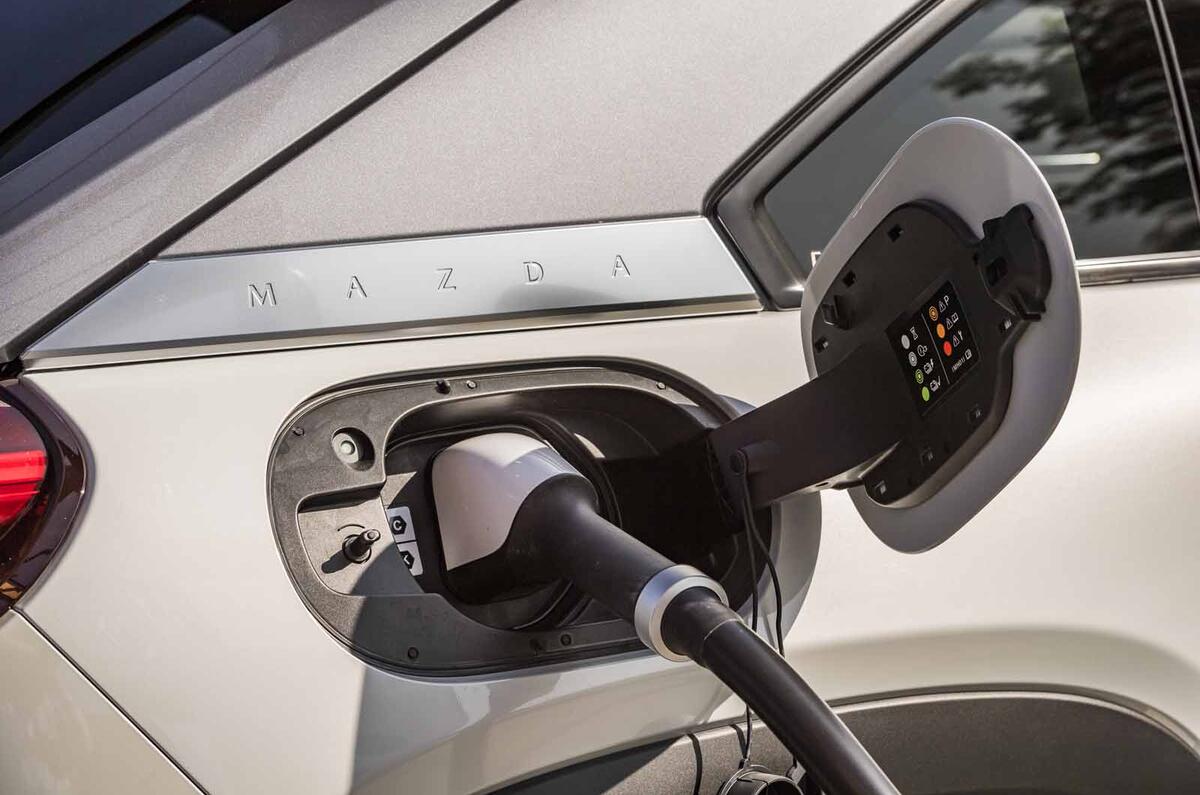
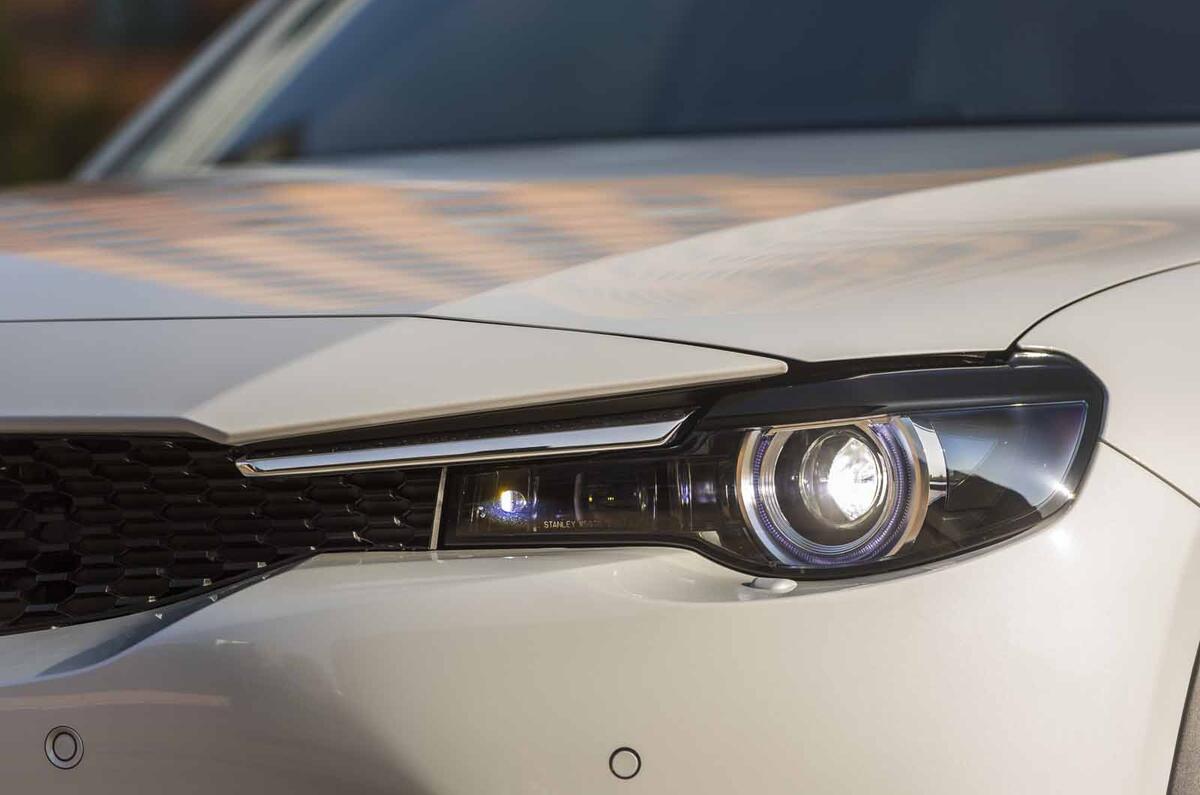




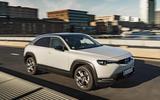
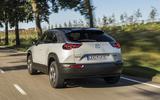
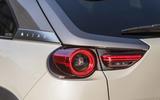






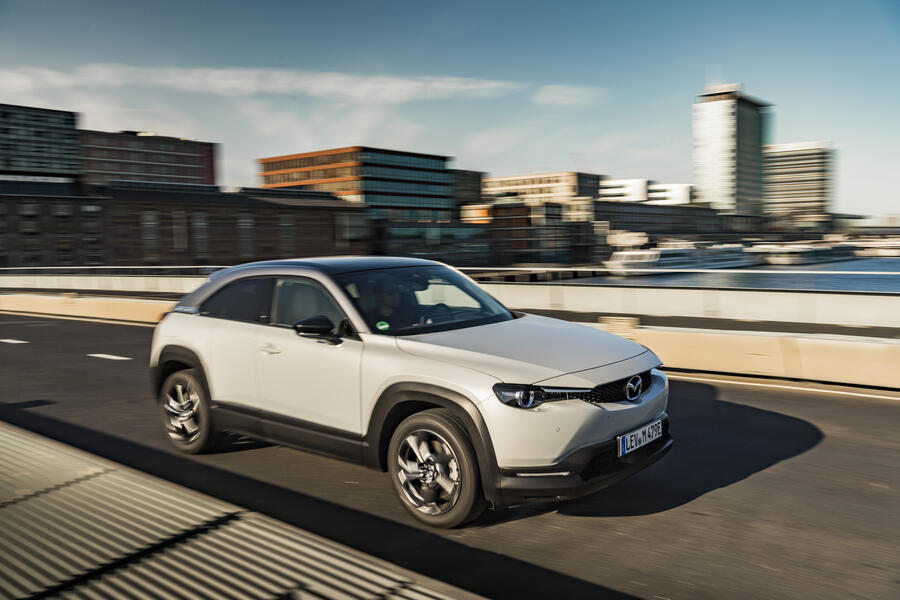


Join the debate
Add your comment
Not sure
Range is a letdown. It's short-sighted of manufacturers to quote stats about people's commutes, as if that's all they use their cars for. If you wanted to go on a day trip to a remote spot, you're pretty limited to 50 miles each way if it's somewhere that doesn't have a charger. As others have said, touch screen is a bizarre decision given Mazda's other recent efforts, and stylistically I can't see it winning many buyers.
Poor range for all that money
Pointless car.
And if people start quoting the stats of the opposition, they're all ridiculously expensive, compromised forms of transport too.
I'm seriously worried that by car manufacturers getting away with doing ridiculous things constantly for so long (e.g. launching disappointing and expensive EVs, or artificially hiking the price of ICE cars to ludicrous levels to close the gap) us consumers will just come to accept this appalling situation.
The bottom line for me is that if I'm going to have to experience range anxiety and the delights of stopping somewhere awful for ages for it to charge up that I'll have to pay a premium for (thus already negating one of the main reasons for buying an EV), I'm not prepared to spend ridiculous amounts of money on one (despite us tax-payers already paying £3500 towards these EVs anyway in our taxes).
gavsmit wrote:
Issues is if you have £27,000 you can probably find £38,000 for a no compromises Tesla Model 3.
One of the upsides of 200 miles plus of range is that if you forget to plug it in there is no issues.
Interestingly enough one of the issues with smaller batteries is that they end up being more heavily discharged for equivalent millage and as such last a much shorter period of time thus making a mockery of their CO2 in manufacture argument for smaller batteries (which is bollox anyway as you can make a battery pack using clean energy).
Touchscreen?
Surprised to see the touchscreen for climate controls in this Mazda. I remember reading that Mazda did a lot of research in designing the new 3 interior and concluded that touchscreens were a distraction hence the set-up in the 3. Totally ignoring that here?